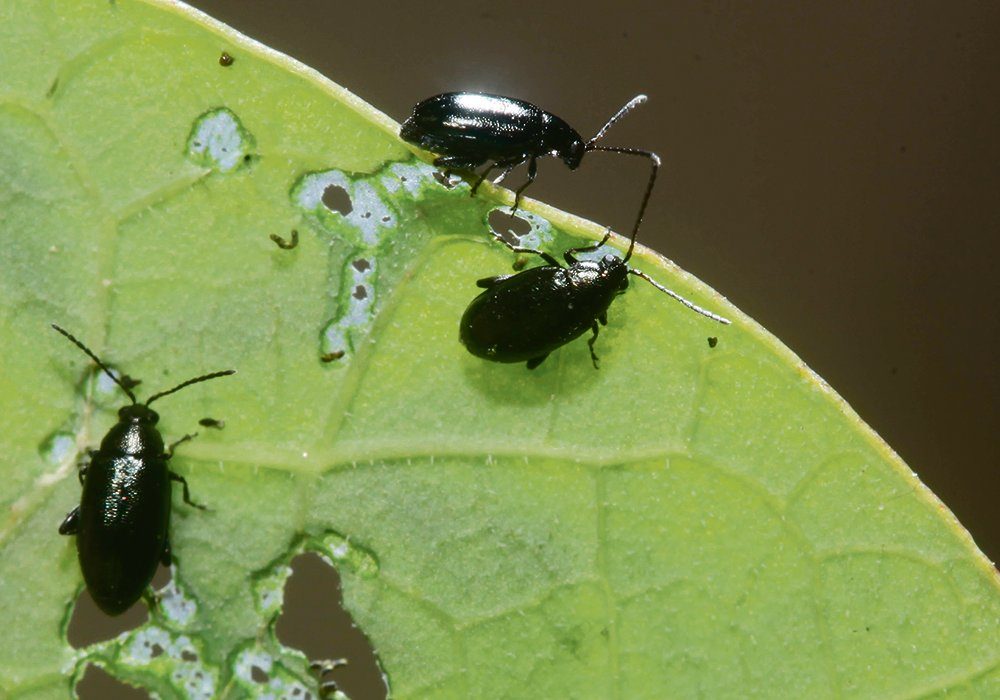Farmers urged to keep watch for flea beetles

Insect traps monitored by Saskatchewan Agriculture have shown significant numbers over the past couple of weeks
It’s never too early in the growing season to start scouting for yield-robbing insects.
James Tansey, a pest management specialist with Saskatchewan Agriculture, said growers should be on the lookout for flea beetles as soon as canola seedlings begin to emerge.
Striped flea beetles can be voracious feeders and are typically active before the cruciferous or black flea beetle.
Striped beetle activity was observed in some parts of Western Canada as early as late April, according to the Canola Council of Canada.
If canola seedlings aren’t available, the beetles can survive on flixweed, wild mustard and other cruciferous weed species until canola seedlings begin to emerge.
“If they’ve got food to eat, they can be viable in the environment until the (canola) seedlings come up,” Tansey said.
“Once the seedlings come up, the dinner bell is on.”
Tansey said striped beetles have been active for some time.
Growing degree days have been building up over the past week or two, so populations are expected to increase.
Matt Struthers, provincial crop specialist with Saskatchewan Agriculture, said May 13 that insect traps monitored by the provincial agriculture department have shown significant flea beetle numbers over the past couple of weeks.
The insects have been biding their time, feeding on roadsides, pastures and other weedy areas that have suitable host species.
“We have insect traps all over the province and our sticky traps have caught quite a few flea beetles,” Struthers said.
As of late last week, few if any canola crops had emerged in the province, he added.
“With no canola or anything else to eat, they (the beetles) are really in search of food. Hopefully, they starve before any canola plants come up.”
“As those (canola) seedlings come up, they are sensitive to flea beetle damage so it’s good for growers to keep an eye out for feeding activity,” added Tansey.
“I’m certain we haven’t seen peak (flea beetle) emergence at this point….”
Flea beetle emergence can occur over a prolonged period, depending on environmental conditions.
“They don’t just appear, poof, all at once,” Tansey said.
“Emergence can be pretty drawn out and can actually occur over weeks or even a month or longer. It’s also important to consider that adults can live for months.”
Feeding is usually most intense in warm, dry conditions.
Canola plants are particularly vulnerable when topsoil moisture is scarce and plant development is slow.
“It’s always good for growers to be mindful of flea beetle damage and to monitor their fields as soon as seedlings are coming up,” Tansey said.
Source: producer.com

